Scuba diving is so fun sometimes that you just don’t want your dive to end! However long you can currently stay underwater, don’t you just wish your bottom time was just a bit longer? That way, you can see more of the aquatic environment from fish to octopuses to turtles, coral reefs, and even man-made structures or wrecks.
There are many ways to increase your bottom time when scuba diving. For instance, you can learn how to control your breathing, master your buoyancy control, dive with more than one tank, or dive with nitrox, just to list a few methods. Some of these tips will only slightly increase your bottom time, but if you do all of them in a dive, you could literally double your bottom time or more.
There are endless opportunities to explore in the ocean but so little time. There is a possibility that your current scuba rig or techniques are not efficient, but with a few tweaks, you can get more out of each dive. In this article, we’ll discuss ways you can increase your bottom time so that you can explore all of what the aquatic world has to offer.
What is your bottom time?
Before we explain any further, let’s first define what bottom time is. Bottom time is the total amount of time you stay underwater for a dive. If you want a more official definition from PADI, they define it as the total elapsed time from descent to ascent.
If you have a dive computer or dive watch, you can track your bottom time so you have an idea of how close you are to the end of your planned dive. A dive computer will automatically record the data for you after you submerge past five feet. To manually calculate bottom time, start timing it once you’ve submerged underwater and are breathing from your scuba cylinder.
Once you surface, that’s when you should stop counting the elapsed time. Some divers are disappointed at what their watch says. Perhaps they intended to stay underwater for closer to an hour but had to ascend after only 45 minutes. What could have happened that caused them to use up their breathing gas so quickly? Oftentimes the culprit is unexpected physical exertion.
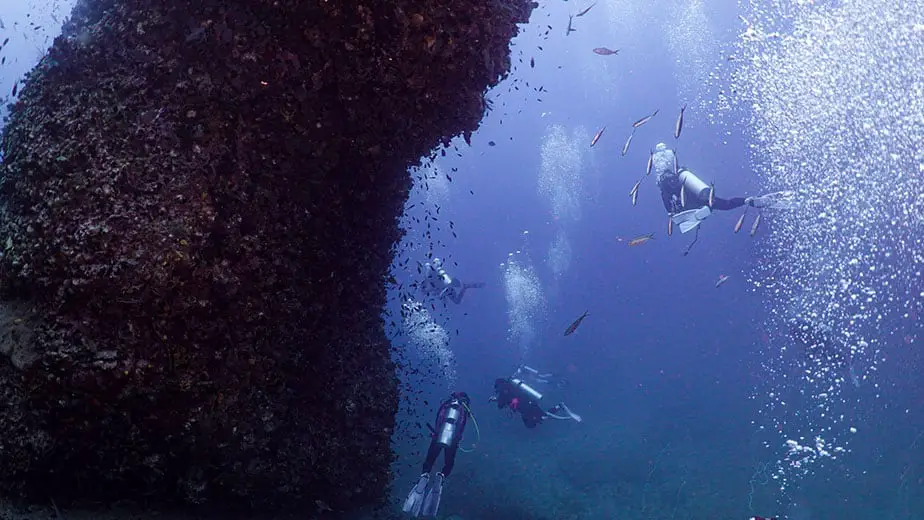
Nobody can stay underwater forever. Us divers are limited by the amount of breathing gas available in our tanks. If we consume it faster than planned, then we will have to resurface much sooner. On top of that, unless you’re doing a decompression dive, you must adhere to your no-decompression limits (NDL).
The NDL is not to be confused with the bottom time. Your NDL is the amount of time you can safely stay at the depth you’re diving at without needing to perform any decompression stops (a series of stops performed during the ascent to give your body more time to off-gas), but you will still have to do a safety stop prior to surfacing.
Most dives are no-decompression dives. If you are approaching your NDL too quickly, perhaps due to doing multiple dives in a day, then your bottom time will be cut short and you will have to surface even if there’s more breathing gas left in your tank. If you stay underwater too long, you run the risk of getting decompression illness after you ascend.
Thankfully, there are some simple ways you can improve your bottom time that you can easily apply on your next dive. If you find yourself physically exerting yourself too often, consuming too much gas, and having to cut your dive short because of lack of breathing gas or reaching your NDL too quickly, then try the following tips.
Control your breathing
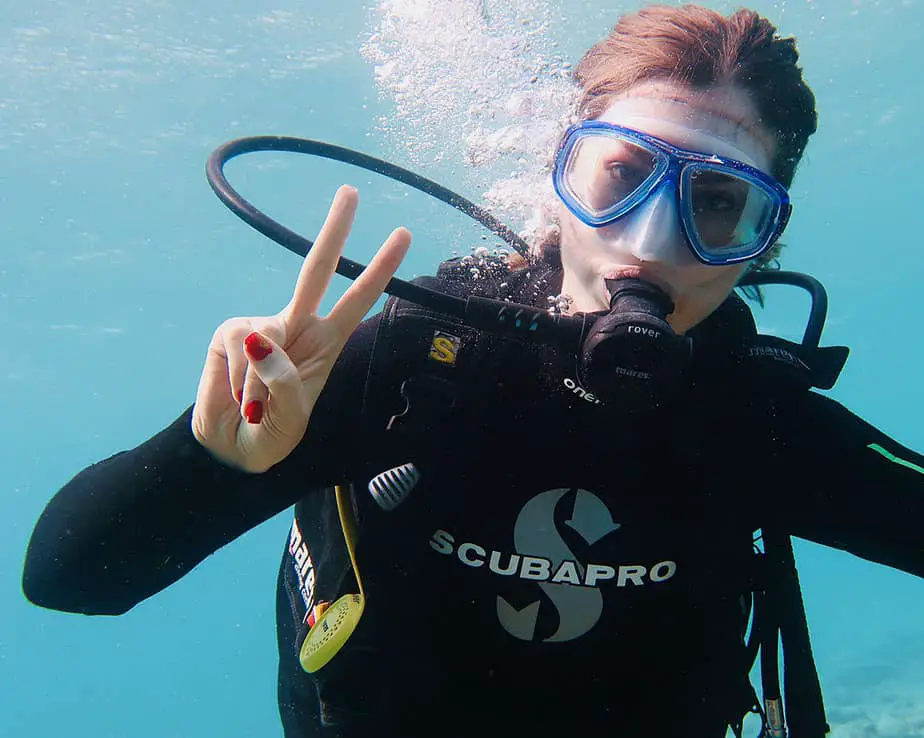
Your breathing rate affects how fast you will use up your gas, which puts a limit on your bottom time. Following this logic, the goal then is to try to breathe in a more controlled manner. You must breathe more slowly and deeply in order to get sufficient oxygen. Do this as much as possible. A deeper breath will maximize each breath since more oxygen will actually reach your lungs where it’s absorbed into the bloodstream.
If you do rapid, shallow breaths, you waste a lot of gas, specifically the oxygen in the gas mix, because only some of it will reach your lungs and the rest will only travel as far as the back of your throat. In other words, breathing fast is wasteful and uses up your breathing gas quickly. You may need to perform two or three shallow breaths just to match what one deep and slow breath can provide.
Furthermore, breathing itself can contribute to a shorter bottom time. After all, your body uses up energy in order to inhale. You will find it more exhausting to breathe faster than to simply breathe slowly and deeply.
Lastly, men will find that they tend to have shorter bottom times than women. The reason is that men have bigger lungs and a larger body. They necessarily take deeper breaths and need more oxygen to function properly. Women, if your diving buddy is a man and he needs to surface before you do, ending your dive as well, don’t be too harsh on him; there’s not much he can do about it.
Use a snorkel at the surface
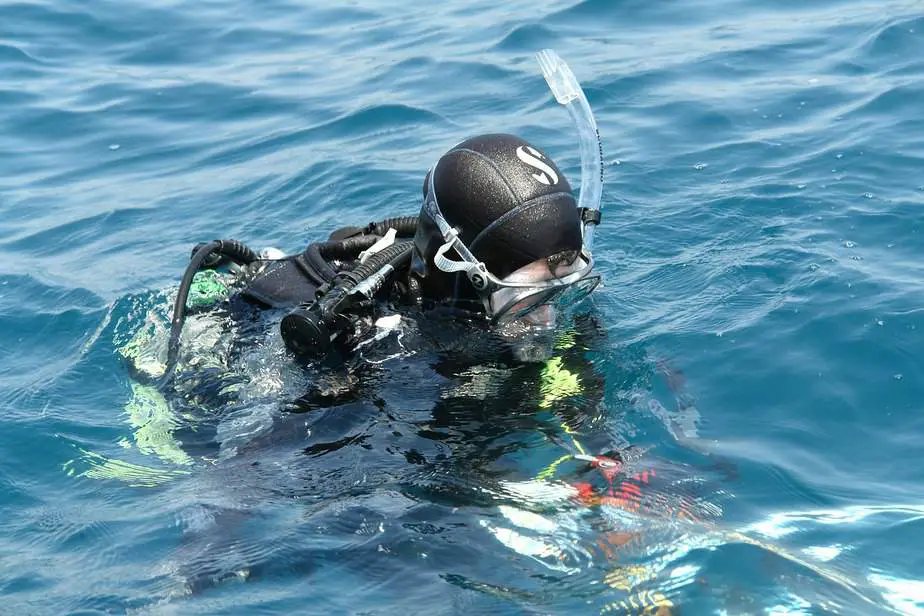
You may have seen some divers wearing a snorkel which may seem redundant considering they could be breathing from the regulator. The reason they have a snorkel is so they can conserve their gas while at the surface. Some divers, particularly shore divers, might need to spend a considerable amount of time at the surface before they submerge.
If you need to swim to your dive site, or you are simply waiting for the rest of the group to enter the water but the waves are choppy, you can use the snorkel to conserve air. It’d be a shame if you have to use your precious breathing gas before you even submerge. By breathing through a snorkel at the surface, you don’t have to tap into your gas supply until you actually need to.
The trade-off is that once you’re underwater, the snorkel increases your drag and may get in your way. For this reason, it’s best to get a snorkel that can be folded up. You can then stow the snorkel in your BCD pocket once it has fulfilled its purpose at the surface.
Don’t dive too deep
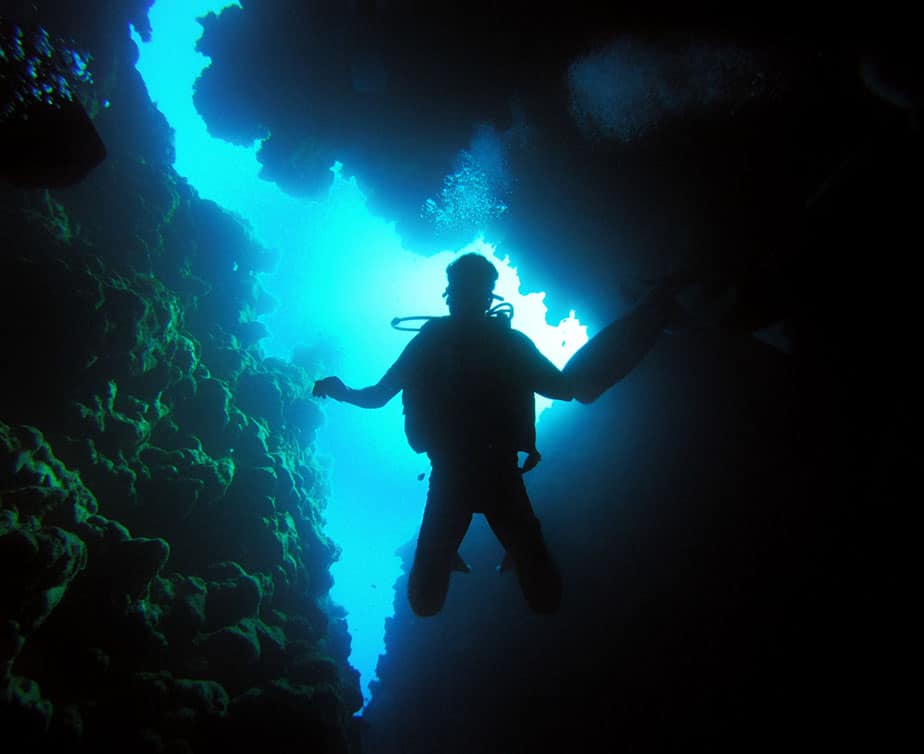
How deep you dive also affects your bottom time. One of the first things taught in the Open Water Diver course is how depth affects air pressure. The deeper the depth, the greater the pressure, and the more compressed your breathing gas becomes. This applies to the air inside your scuba cylinder as well as your lungs.
Due to how compressed your lungs get from the water pressure, you need to breathe more to get the same amount of oxygen, and you’ll consume more gas than usual because the gas has been compressed.
You’ll be surprised at how quickly this happens. Even at shallow depths, you will notice that your bottom time decreases substantially. Pressure increases by one atmosphere for every 10 m (33 ft) that you descend.
If there is one atmosphere of pressure at sea level, then at a depth of 10 m there are two atmospheres of pressure, and at a depth of 20 m (66 ft) there are 3 atmospheres of pressure, and so on. In other words, at a depth of only 20 m underwater, you will inhale the equivalent of three times the gas with each breath compared to at sea level because of how much it’s been compressed. Knowing this, it’s not surprising how quickly your bottom time decreases with each 10 m you descend.
Master buoyancy control
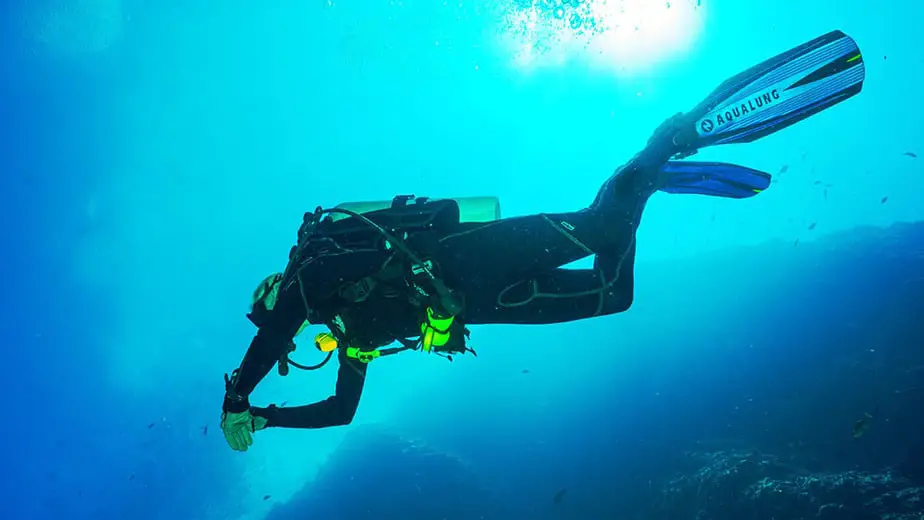
Another way to prolong your bottom time is to be proficient with your buoyancy control device (BCD). The purpose of a BCD is so that you can stabilize your body underwater without wasting energy. BCDs come in different types, and all of them feature a bladder that you inflate or deflate as you need.
If you find yourself sinking, don’t waste energy kicking your fins to stay afloat; simply inflate some air into the bladder until you reach neutral buoyancy, or vice versa. By having mastery over your buoyancy, you never have to spend energy to keep yourself from going up or down when you don’t want to.
Furthermore, the more adjustments you need to make, the more gas you’re wasting. After all, it’s taking gas straight from your tank which could have gone towards extending your bottom time. Additionally, with the wrong type of BCD you may waste so much time and gas trying to reach neutral buoyancy that you could have spent exploring the coral reefs instead. By being proficient with buoyancy control, and a BCD type that you’re comfortable with, you can stay underwater for longer.
Go with the flow
You will encounter currents underwater. If possible, take a page from drift divers and let the current assist you as you move through the water. Fighting against a current is exhausting and will cause you to use more air than you normally do. There’s not even a guarantee you’ll win against the current.
Whenever you exert yourself, your muscles need more oxygen to keep up with the challenges it’s up against. This is why you’re taught not to use your hands to aid with buoyancy control; it’s just a waste of energy and you should be inflating or deflating your BCD instead. So when you feel a current pushing you, instead of fighting against it, just go with it to conserve energy and keep your bottom time going for longer.
Use the right equipment
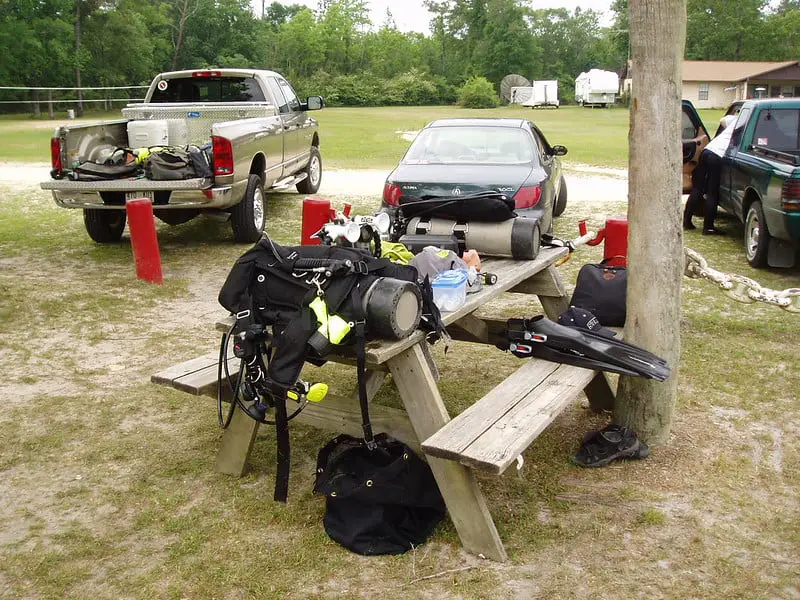
In a similar vein, bringing the right equipment for the job will extend your bottom time. Some divers want to be prepared for every situation so they’ll bring their entire scuba kit with them. We do agree that you should have backups of the most critical items, such as a backup dive computer, mini air tank, or a spare dive mask. However, the more items you bring, the bigger your profile is which increases drag. We recommend bringing only the equipment you need in order to streamline your profile and conserve energy.
Next, don’t underestimate how much extra propulsion high-quality fins can provide you. Beginners using short fins might not realize that the more they kick, the more energy they are wasting. Instead, invest in a pair of long fins made of a more durable material that can generate more thrust per kick. Not all fins give you the same level of propulsion, and if you choose low-quality ones, you will waste more energy and decrease your bottom time.
This might seem obvious, but one of the easiest ways to increase your bottom time is to simply get a second tank. Known as twinset diving, you can double your bottom time at shallow depths as long as you are still staying within your NDL. You can also do sidemount diving with two tanks. Imagine how much more you could explore with twice the amount of bottom time. Furthermore, if one tank fails, the second tank is your failsafe which gives you a lot of leeway during deeper dives.
Check for leaks
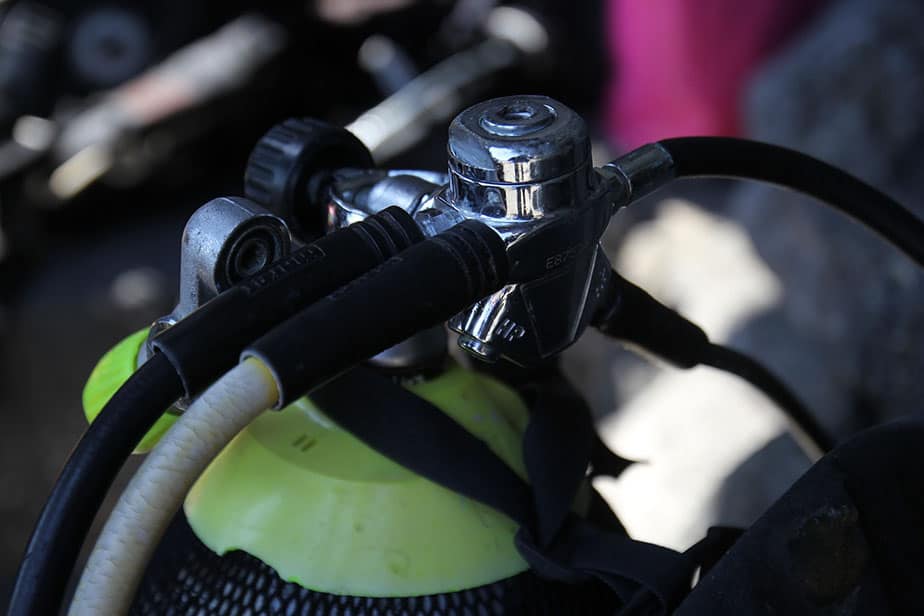
Whether you’re diving with one scuba cylinder or two, you must always be wary of a free-flowing regulator or a leak in the tank itself. Be extra vigilant during your pre-dive check. It’s not uncommon for gas lines or seals to leak. Even a small leak will cause a significant decrease in your bottom time, plus you don’t know if that leak is going to worsen during the dive.
For your safety, you should make it a habit of inspecting your equipment for leaks on a consistent basis. Scuba tanks need to be inspected at least once a year, and worn O-rings are a common way for gas to leak at the tank’s valve joint. If you suspect your O-ring may be faulty, replace it as soon as possible. Otherwise, you may be at risk of losing your precious breathing gas while diving.
Dive with nitrox
If you’re willing to get a new certification, consider taking the Enriched Air Nitrox Diver course which will certify you to dive with nitrox. Nitrox is basically any gas mix where the percentage of oxygen in the mix is not 21%. Standard air is composed of about 21% oxygen, 78% nitrogen, and 1% other gases. When diving with nitrox, you are breathing a gas mix that typically has more than 21% oxygen. Common percentages are 32% and 36% oxygen. This also means that there is less nitrogen.
You can check the oxygen content of your nitrox mix using a nitrox analyzer. If the oxygen percentage is off by even 1%, it can make a difference in how long your NDL which you must account for. If you fail to do this step, you run the risk of diving with a gas mix that isn’t what you think it is.
By switching from standard air to nitrox, your body will therefore absorb less nitrogen when diving. As you know, when your body absorbs too much nitrogen, it increases your chances of suffering from decompression illness if you don’t properly off-gas. When your gas mix has a lower percentage of nitrogen like with nitrox, you effectively increase your bottom time.
As an example, if you are diving at a depth of 30 m (100 ft) with EAN36 (36% oxygen), you will have twice the NDL as someone breathing conventional gas. Along with the other tips described in this article, there are multiple ways you can increase your bottom time.


